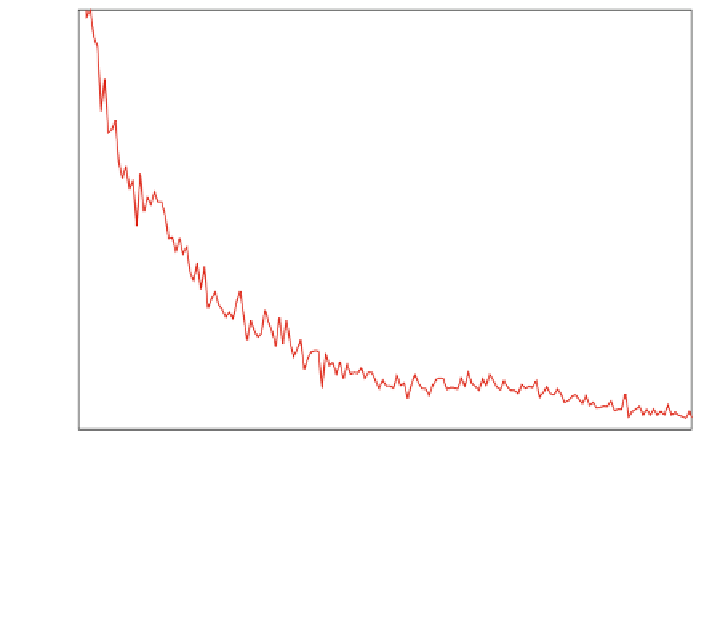Biomedical Engineering Reference
In-Depth Information
3
2
1
0
25
50
75
100
125
150
Cell diameter (
µ
m)
Fig. 2 Evolution of adipose cell-size distribution under positive and negative energy
balance. C56BL/6 mich were fed with a high-fat diet for 7 weeks, then with a regular diet for
following 12 weeks. Cell-size distributions in epididymal fat depots were measured at initial time
(3 months old; black), after 7-week high-fat diet (red), and after 7-week high-fat diet plus
12-week regular diets (blue). Mean
SD (n = 6). Note that we estimated absolute frequencies of
cell sizes from their relative frequencies by using the measured depot mass of epididymal fat
4 Adipose Tissue Dynamics
The Bayesian method can infer adipose tissue dynamics from changes of static
snapshots of adipose cell-size distributions under positive and negative energy
balance (Fig.
2
). Possible physical processes in adipose tissue dynamics are
recruitment of new cells, growth, shrinkage, size fluctuation, and death of existing
cells. They can be mathematically summarized in a model described by the fol-
lowing partial differential equation:
2
n
os
2
k
ð
s
Þ
n
:
o
n
ot
¼ bd
ð
s
s
0
Þ
o
os
½v
ð
s
Þ
n
þ
D
o
ð
11
Þ
The equation describes the whole life of adipose cells from birth to death. Here,
model parameters represent birth rate b at minimal cell size s
0
, size-dependent
growth/shrinkage rate v
ð
s
Þ
, size fluctuation rate D, and size-dependent death rate
k
ð
s
Þ
. Note that we replaced the frequencies n
i
at discrete ith size bins with a
frequency function n
ð
s
Þ
for continuous size s as a continuum limit. Hereafter we
examine each process inferred from changes of adipose cell-size distribution under
positive and negative energy balance.















































































































































































































































































































































































































































































































































































































































































































































































































































































































































































































Search WWH ::

Custom Search